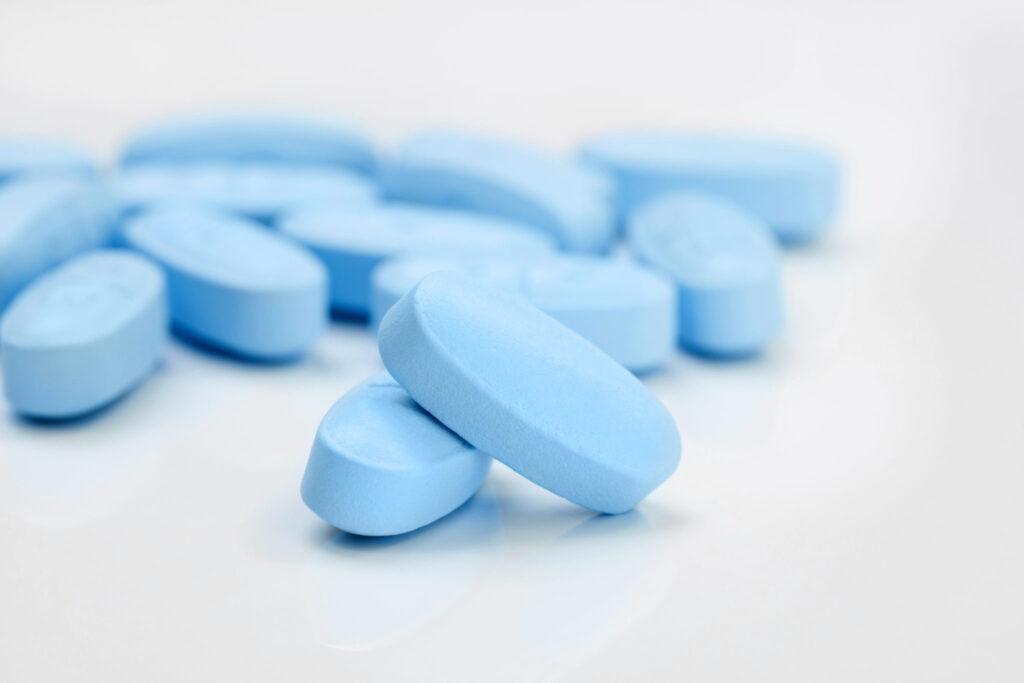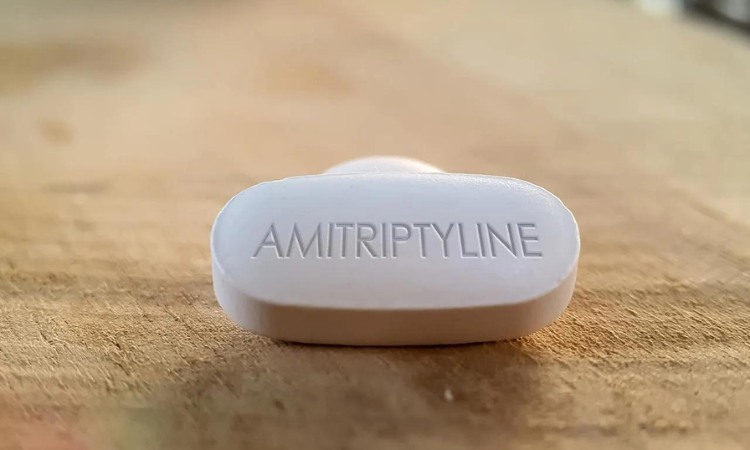Key Takeaways
- Haloperidol is a medication used to treat schizophrenia, but it’s also found a place in drug rehabilitation.
- The pros of using Haloperidol are it reduces agitation and restlessness during withdrawals; curbs cravings; and may even reduce the potential for relapse.
- The cons of using Haloperidol are muscle stiffness or tremors which could be mistaken for withdrawal symptoms; emotional blunting; and even serious conditions like tardive dyskinesia.
- Proper dosing and monitoring are essential to minimize risks and maximize benefits.
- RelevanceRecovery.com offers a comprehensive approach to integrating medications like haloperidol into a full treatment plan.

What Is Haloperidol and Its Role in Recovery?
Haloperidol is a medication known primarily for treating schizophrenia, but it’s also used off-label to support individuals struggling with addiction. In the brain, it works by balancing dopamine, a neurotransmitter that plays a role in how we feel pleasure.
This rebalancing act can help reduce the intensity of withdrawal symptoms and cravings, making it a potential ally in the battle against addiction. But it’s not a one-size-fits-all solution – it’s important to weigh its use carefully against potential side effects.
How Haloperidol Can Help
When you’re facing the challenge of recovery, haloperidol might be one of the options presented to you. It’s a bit like having a strong, but strict coach – it can guide you through some of the toughest parts of your journey. Let’s talk about how haloperidol can lend a hand when you’re trying to leave drugs behind.
The Pros of Haloperidol Use
Recovery is a marathon, not a sprint, and haloperidol can be part of your support crew, helping you maintain your pace when the going gets tough.
For those who find themselves wrestling with the physical and psychological challenges of withdrawal, haloperidol can be a source of relief. It’s like having a buffer against the storm of symptoms that can make early recovery so daunting.
Alleviating Withdrawal Symptoms
- Reduces agitation and restlessness, which can be a barrier to focusing on recovery.
- Helps manage severe symptoms that can arise from alcohol and certain drug withdrawals.
- Acts as a stabilizing force during the initial detox phase, providing a smoother transition into sobriety.
- Can be used in a controlled medical setting to ensure safety and efficacy.
- Offers a non-narcotic option for those who need medication assistance without the risk of further addiction.
By dampening the distress of withdrawal, haloperidol can make it easier for you to stick with your treatment plan and move forward in your recovery. However, it’s not a silver bullet – it’s just one part of a broader strategy that should include therapy, support groups, and lifestyle changes.
Reducing Craving Intensities
Cravings are like uninvited guests at a party—they show up without warning and can be hard to send away. Haloperidol can help quiet those cravings, making it easier to focus on your recovery goals.
It’s not about silencing your body’s signals, but rather managing them in a way that supports your long-term success. This medication can be a part of your toolkit, working alongside counseling and other treatments to keep cravings in check.
Potential for Preventing Relapse
- Creates a more manageable mental environment by reducing the ‘noise’ of cravings.
- Supports your ongoing therapy by allowing you to engage more fully without the distraction of intense urges.
- By lessening the likelihood of acute withdrawal, it indirectly reduces the chance of a relapse.
- Can be an integral part of a relapse prevention program when used responsibly under medical supervision.
- Encourages a more steady and sustained journey to sobriety, with fewer detours.
It’s like having a safety net as you walk the tightrope of recovery—haloperidol won’t stop you from falling, but it can help catch you if you slip, making the climb back up a little less daunting.
Haloperidol as an Aid in Behavioral Interventions
Think of haloperidol as an assistant coach in the game of recovery. It’s there to support the main players—counseling and behavioral therapies.
When your mind is clearer and less clouded by cravings or withdrawal, you’re better able to engage with therapeutic techniques that can change the game. It’s not a stand-alone treatment but part of a team effort to help you develop healthier habits and coping strategies.

The Cons of Haloperidol
But as with any medication, haloperidol isn’t without its drawbacks. It’s important to keep an eye on the full picture, acknowledging that while it can be beneficial, there are also risks involved. Being well-informed means you can make the best decisions for your health and recovery.
Side Effects That Could Impact Recovery
- Sedation and drowsiness can make it hard to engage in therapy or daily activities.
- Muscle stiffness or tremors could be mistaken for withdrawal symptoms, complicating your treatment.
- Long-term use can lead to tardive dyskinesia, a condition with involuntary movements.
- Emotional blunting or a sense of detachment may interfere with personal growth during recovery.
- Rare but serious side effects like neuroleptic malignant syndrome must be monitored for.
Side effects can be like unexpected roadblocks on your journey. It’s crucial to manage them with care, keeping open lines of communication with your healthcare provider.
Haloperidol’s Limitations in Addiction Types
Haloperidol isn’t a universal key that fits every lock of addiction. Its effectiveness can vary depending on the substance you’re recovering from.
For example, it’s not typically the go-to for opioid addiction, where other medications like methadone or buprenorphine might be more effective. Knowing where haloperidol fits in the spectrum of treatment options is essential for tailoring a plan that’s right for you.
Risk of Developing Tolerance and Dependence
While haloperidol can be a beacon of hope, it’s important to remember that any medication has the potential to become a crutch. Over time, the body may become accustomed to the presence of the drug, leading to tolerance.
This means higher doses may be needed to achieve the same effect, which can be a slippery slope. Dependence is another concern; it’s when the body starts to rely on the medication to function normally. These risks highlight the need for careful, supervised use of haloperidol in the context of a comprehensive treatment plan, one that prioritizes your long-term well-being.
Ethical Considerations in Medication Use
Prescribing medication is not just a medical decision; it’s a responsibility that carries ethical weight.
When it comes to using haloperidol in drug rehabilitation, it’s not just about the physical effects. There’s a moral aspect to consider. Informed consent is paramount—ensuring you understand the benefits and risks before starting treatment.
It’s also about respect for your autonomy, and supporting your right to make decisions about your body and treatment. Ethically, the goal is to do good, to provide relief, without causing harm. This delicate balance is at the heart of every decision made in your care.
Best Practices for Haloperidol Administration
Administering haloperidol effectively requires a blend of science and art. It starts with a thorough evaluation to determine if haloperidol is the right fit for you. From there, it’s about tailoring the dosage to your specific needs and circumstances.
Regular monitoring is essential to ensure the medication does its job without causing undue harm. And throughout the process, clear communication between you and your healthcare provider is key. This collaborative approach is what sets RelevanceRecovery.com apart—we’re not just treating symptoms; we’re treating individuals.
Identifying Candidates for Haloperidol Therapy
- Those who experience severe agitation or psychosis during detox.
- Individuals with a history of medication-responsive symptoms in their addiction.
- Patients who have not responded well to other forms of treatment.
- People who can commit to regular follow-ups and monitoring for side effects.
- Individuals without contraindicating health conditions that increase the risk of side effects.
Identifying the right candidates for haloperidol therapy is like finding the key that fits a particular lock. It’s not about using it as a blanket solution but about finding the situations where it can unlock the most benefit with the least risk.
Adjusting Dosages for Optimal Benefit
Just like a tailor adjusts a suit for the perfect fit, dosages of haloperidol need to be customized for each individual. Starting low and going slow is the mantra, gradually finding the sweet spot where the benefits outweigh the side effects.
It’s a process that requires patience and precision, with regular check-ins to assess how you’re responding. This personalized approach ensures that you’re getting just what you need—no more, no less.
Monitoring for Adverse Reactions
Keeping a watchful eye on how you’re doing with haloperidol is crucial. It’s like having a guardian angel looking out for any signs of trouble. This means regular check-ups, being honest about any new symptoms and having a plan in place for how to respond if side effects do occur. Vigilance is key, as catching issues early can make all the difference in ensuring your safety and the success of your treatment.
At RelevanceRecovery, we understand the intricacies of medications like haloperidol. Our team is dedicated to providing high-level treatment that respects your individual needs and ensures you’re supported every step of the way on your journey to recovery.
Making an Informed Decision on Haloperidol
Deciding whether haloperidol is right for you isn’t a snap judgment—it’s a careful consideration of facts, personal circumstances, and potential outcomes. This decision should be made in collaboration with healthcare professionals who can provide guidance based on your unique situation.
Weighing the Pros and Cons: A Summary
- Pros: Haloperidol can ease withdrawal symptoms, reduce cravings, and may help prevent relapse when used as part of a comprehensive treatment plan.
- Cons: Potential side effects include drowsiness, muscle stiffness, emotional blunting, and in rare cases, more serious conditions like tardive dyskinesia or neuroleptic malignant syndrome.
- Considerations: The effectiveness of haloperidol varies depending on the type of addiction, and it requires careful dosing and monitoring to manage risks.
- Decision-making: Informed consent is vital, ensuring you understand the potential benefits and risks before starting treatment.
It’s about balancing the scales—measuring the benefits against the risks to make the best choice for your health and recovery.
Integrating Haloperidol into a Comprehensive Treatment Plan
Haloperidol isn’t a standalone solution; it’s one component of a multifaceted approach to recovery. Integrating it into your treatment plan means combining medication with holistic therapy, support groups, and lifestyle changes.
At RelevanceRecovery.com, we specialize in creating personalized treatment plans that incorporate medications like haloperidol safely and effectively, ensuring they work in harmony with other recovery strategies.

Relevance Recovery for Safe Rehab Practices
We take pride in our credentials and the high-level treatment we provide. Our approach is rooted in the understanding that recovery is personal and complex. We’ve designed our programs to address the underlying causes of addiction, teach new coping skills, and empower our clients with passion and purpose.
Our founder, Daniel Regan, has gone through the recovery journey himself, and our team is committed to making every client feel valued and supported. We monitor progress and reintegration for over 18 months, ensuring a strong foundation for long-term recovery.
Reach out to us to learn more about using haloperidol as part of drug rehabilitation program.
Frequently Asked Questions (FAQ)
1. What is haloperidol and how is it used in drug rehabilitation?
Haloperidol is a medication primarily used to treat schizophrenia, but it has also been utilized in drug rehabilitation to manage withdrawal symptoms and cravings. In the brain, it works by balancing dopamine levels, which can be disrupted by substance use. Its role in recovery is to provide a steadier mental state, allowing individuals to engage more effectively in other aspects of their treatment, such as therapy and counseling. While it can be a helpful aid, it is always used with careful consideration and under strict medical supervision to ensure safety and effectiveness.
2. What are the main benefits of using haloperidol for addiction treatment?
The main benefits of haloperidol in addiction treatment are its ability to reduce the severity of withdrawal symptoms and to help manage cravings. It acts as a stabilizing agent, making the early and often turbulent days of recovery more manageable. By dampening the intensity of withdrawal, individuals can participate more fully in other aspects of their treatment, such as behavioral therapies and counseling sessions. Additionally, haloperidol can play a role in preventing relapse by helping to maintain a more balanced mental state.
3. What negative effects might someone experience with haloperidol?
While haloperidol can be beneficial, it’s important to be aware of its potential negative effects. Some individuals may experience sedation, drowsiness, or muscle stiffness, which can impact their daily activities and engagement in treatment. Emotional blunting or a sense of detachment can also occur, potentially hindering personal growth during recovery. In rare cases, more serious side effects such as tardive dyskinesia or neuroleptic malignant syndrome may develop, which require immediate medical attention. Regular monitoring and communication with healthcare providers are essential to manage these risks.
4. How does haloperidol fit into a broader addiction treatment strategy?
Haloperidol is not a standalone treatment for addiction; it is most effective when integrated into a comprehensive treatment plan. This plan includes a combination of medication-assisted therapy, individual and group counseling, support groups, and lifestyle changes. Haloperidol may be used to create a more stable foundation upon which these other therapies can build. The goal is to use haloperidol as a tool to facilitate a holistic approach to recovery, addressing both the physical and psychological aspects of addiction.
5. Is there a risk of addiction to haloperidol itself, and how is it managed?
While haloperidol is not considered addictive in the same way that substances like opioids or alcohol are, there is a risk of developing a dependence on the medication. This is managed by using the lowest effective dose for the shortest duration necessary and by conducting regular assessments to evaluate the ongoing need for the medication. If dependence is a concern, healthcare providers will create a tapering plan to gradually reduce the dosage, minimizing withdrawal symptoms from the medication itself.
Conclusion
At RelevanceRecovery.com, we understand the complexities of addiction and the importance of using medications like haloperidol responsibly. Our team is dedicated to providing personalized care that empowers our clients to achieve long-term recovery.
With our full continuum of programs, we ensure that every individual we serve can take the lessons learned during treatment and apply them in their lives, supported by a strong recovery community. If you or someone you love is struggling with addiction, contact us for life-changing treatment and care.









